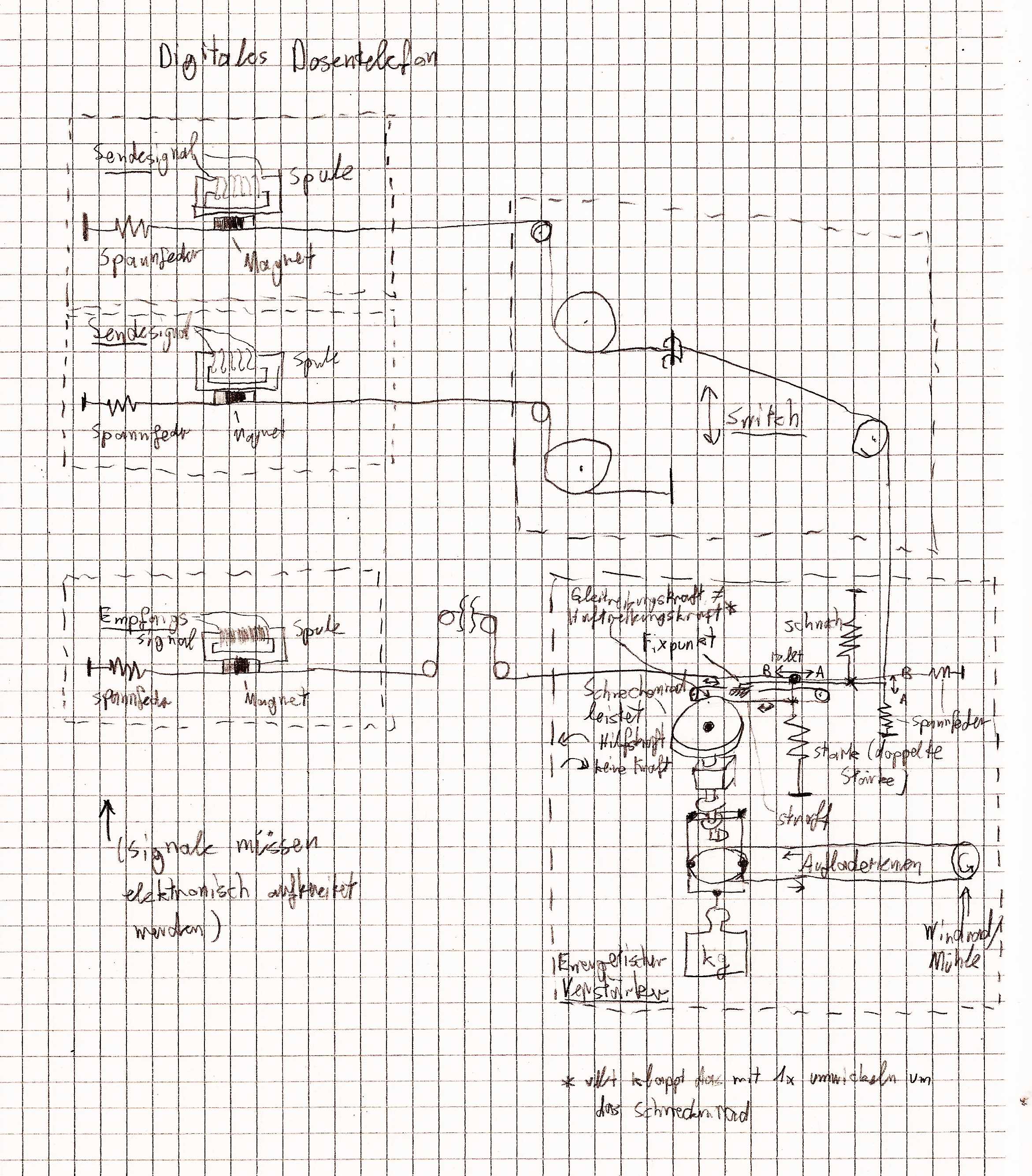Idea: digital can phone - could this work?
When in a phone (video) conference the discussion came to can phones, I thought, what actually is missing for the broad use of can phones. I guess it's about getting around corners and the not-too-far possible distance.
For the corners there seem to be two concepts
1. A diagonal knot from the corner.
2. Twist the wire 1x around a nail (big diverter pulleys seem to be no good option as they mean lots of mass, what you call "rolling masses" in train technology and counts to the breaking inhibiting factors).
For the length of the wire there no solution yet
The length of the wire possibly could be increased by a mechanical amplifier. I didn't find an actial technique for this, but a screw flight (or maybe different gear construction), which gets pulled in one direction by a mass (the mass then moves to the center of the earth). To the opposite direction the wire (signal) is pulled by a spring (when wire is moving, mass stays still).
The problem I couldn't solve so far is that the signal just happens in one place of the wire (there's no drift), whereas the mass would make the wire advance permanently. One approach could be to use the static friction (stiction) for movements in direction of the mass and the kinetic friction in direction of the spring (so away from mass). But the transition is "edged" so analogue transmission most likely won't work. Maybe digital transmission could work.
So following setting may or may not work:
